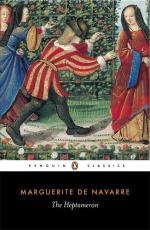The letters are naturally of the very first importance for determining the character of Margaret’s life as a woman of business, a diplomatist, and so forth. They show her to us in all these capacities, and also in that of an enlightened and always ready patroness of letters and of men of letters. Further, they are of value, though their value is somewhat affected by a reservation to be made immediately, as to her mental and moral characteristics. But they are not of literary interest at all equal to that of either of the other divisions. They are, if not spoilt, still not improved, by the fact that the art of easy letter-writing, in which Frenchwomen of the next century were to show themselves such proficients, had not yet been developed, and that most of them are couched in a heavy, laborious, semiofficial style, which smells, as far as mere style goes, of the cumbrous refinements of the rhetoriqueurs, in whose flourishing time Margaret herself grew up, and which conceals the writer’s sentiments under elaborate forms of ceremonial courtesy. Something at least of the groundless scandal before referred to is derived in all probability, if not in all certainty, from the lavish use of hyperbole in addressing her brother; and generally speaking, the rebuke of the Queen to Polonius, “More matter with less art,” is applicable to the whole correspondence.
Something of the same evil influence is shown in the Marguerites. It must be remembered that the writer died before the Pleiade movement had been fully started, and that she was older by five years than Marot, the only one of her own contemporaries and her own literary circle who attained to a poetic style easier, freer, and more genuine than the cumbrous rhetoric, partly derived from the allegorising style of the Roman de la Rose and its followers, partly influenced by corrupt following of the re-discovered and scarcely yet understood classics, partly alloyed with Flemish and German and Spanish stiffness, of which Chastellain, Cretin, and the rest have been the frequently quoted and the rarely read exponents to students of French literature. The contents of the Marguerites, to take the order of the beautiful edition of M. Felix Frank, are as follows: Volume I. contains first a long and singular religious poem entitled Le Miroir de l’Ame Pecheresse, in rhymed decasyllables, in which pretty literal paraphrases of a large number of passages of Scripture are strung together with a certain amount of pious comment and reflection. This is followed (after a shorter piece on the contest in the human soul between the laws of the spirit and of the flesh) by another poem of about the same length as the Miroir, and of no very different character, entitled Oraison de L’Ame Fidele a son Seigneur Dieu, and a shorter Oraison a Notre Seigneur Jesus Christ completes the volume. The second volume yields four so-called “comedies,” but really mysteries on the old mediaeval model, only




